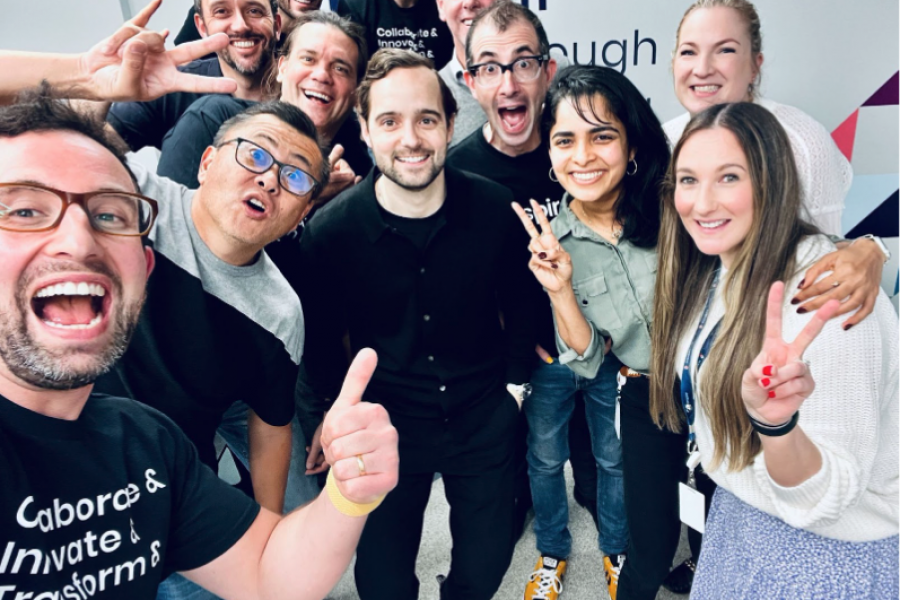Along with making resolutions you’re never likely to keep, another inescapable aspect of the new year is reading or hearing a list of predictions for the next 12 months.
From fashion trends to economic forecasts, finding out what the future has in store often provides some interesting and entertaining insights. However, it can also be a little frustrating when you discover that the next big thing isn’t possible or practical yet.
Here at Transpire, we always aim to position our customers one step ahead of the curve with workable cutting-edge technology and transformative yet pragmatic digital experiences, made possible by our team of forward-thinking designers and developers.
As ever, our constantly changing world shows no signs of slowing down in 2019, with new and novel advances continually coming to the fore. It’s our job to identify the latest technologies and trends, decide how they could help our customers, and create innovative solutions that have a meaningful impact on end users.
With this in mind, we’ve devised a list of 10 technologies and UX trends for digital transformation in 2019, which as opposed to simply being a possibility, can be adopted and utilised by any business right now!
1. Voice UIs and Commands
According to Adobe’s State of Voice Assistants report released last year, 71% of smart speaker owners use voice every day, and 44% use voice multiple times a day. This isn’t limited to straightforward commands like ‘what’s the weather today?’ or ‘play my favourite music’ either – 36% use voice for making a call, 31% for smart home requests, 30% for shopping/ordering items, 17% for food delivery/takeout, and 16% for flight/hotel research.
“Technology trends come and go, but we think voice is here to stay,” said Colin Morris, director of product management for Adobe Analytics. “Consumers continue to embrace voice as a means to engage their devices and the Internet. It’s a trend that has fundamentally changed the face of computing.”
As a result, voice-activation capabilities are a top priority item on several design and business strategy lists for 2019. Moving away from visual towards voice could present a few UI challenges for UX teams, but the chance to create seamless, intuitive, and effortless experiences is too big to overlook or ignore.
2. Machine Learning and Artificial Intelligence
Despite the fact that artificial intelligence (AI) has been a dominant technology trend for quite a few years now, its increasingly influential relationship with machine learning applications will thrive in 2019.
Capable of analysing huge amounts of complex data for greater automation, more actionable insights, and better decision making, the combined forces of AI and machine learning are delivering smarter digital products. Users now benefit from personalised experiences that boost adoption rates, increase retention levels, and enhance overall enjoyment.
At this moment in time, you’ll mainly find AI and machine learning take the form of virtual assistants and chatbots. But in 2019, they could extend their reach in revolutionary ways …
3. Internet of Things (IoT)
Yet another technology trend that has been growing in significance over the past few years, the Internet of Things (IoT) has slowly but surely become a part of everyday life for several people.
However, in order for IoT to become a truly integrated part of society, digital interfaces and experiences must replicate human interactions as closely as possible. Just like voice search, this goes beyond the visual and will encompass physical movements as well.
What’s more, businesses will start to realise that the power of leveraging interconnected devices knows no bounds. Software will become more sophisticated, sensors more accurate, and experiences more engaging.
4. Device-Agnostic Design
Google’s decision to roll out mobile-first indexing in 2018 was one of many reasons why UX teams and app developers decided to prioritise smartphone experiences last year. But over the next 12 months, a device-agnostic approach will take precedence due to the sheer number of connected devices available to buy today.
Because digital technology now dominates the daily routine, users expect seamless experiences when asking a question, requesting information, or issuing a command, regardless of the device being activated. This calls for dynamic multi-device interactions, which not only work together in harmony but also facilitate familiarity and consistency.
One company that has already nailed a device-agnostic approach is Uber. You can request a ride via Google Home, yet finish your trip on an Android or iOS device. In terms of technology, this journey takes place over two platforms, but for the user, it’s a single experience.
5. Augmented and Virtual Reality
It is easy to see why augmented reality and virtual reality have enjoyed such huge success in gaming and marketing circles. With the ability to project imaginary objects into real world scenarios, AR and VR opens up a world of possibilities, from catching your favourite Pokémon as you walk down the street to seeing how a new Ikea couch would look in your living room.
But the power and potential of both AR and VR will keep growing in 2019 to include a wider, more diverse range of applications. For businesses, this could mean customisable social media campaigns or greater consumer engagement to expedite the buying process.
The design and development of AR and VR experiences is also set to shift. UX will go beyond screen-only interfaces to cater for physical interactions and anticipate the user’s next move or query.
6. ‘Material Design’ and 3D Graphics
The concept of using grid-based layouts, responsive animations, as well as transitions, padding, textures, and patterns for increased interactivity and improved adaptability was created by Google in 2014 under the guise of ‘Material Design’.
However, designers and developers have tended to avoid things like 3D rendering and CG augmentation of real footage due to issues surrounding speed, performance, and accessibility. But thanks to better browsers and usability options, adding depth and dimension to flat design is now a distinct possibility.
While impressive and interactive imagery is another way of catching the eye and increasing the ‘liveliness’ of a digital product, the future direction of material design could blur the lines between simplification and sophistication. Having a defined pathway from the get go will help bring meaning to any bold idea.
7. Beacon Technology
Around this time last year, Global Market Insights predicted that the beacon technology market size would exceed $25 billion by 2024. This was thanks in large part to increasing penetration of smartphones around the world and the need for location-based proximity marketing solutions to improve the customer experience.
In 2019, beacon technology is set to keep gaining traction, with customers using their smartphones as a primary channel for conducting product research and making purchase decisions.
Regardless of whether it’s recording student attendance at university, prompting foodies to check out a nearby restaurant, or facilitating immersive BYOD experiences at a cutting-edge multimedia centre, beacon technology has a great deal of practical uses and applications.
8. Content-Focused Experiences
Seeing as good user experience is now an expectation rather than an advantage, both designers and developers are looking to differentiate their digital products and experiences in other ways.
One option is content-focused experiences that capitalise on the power of storytelling, which increases neural activity in the brain fivefold. In turn, users are much more likely to remember the messages being conveyed to them.
The challenge comes with trying to incorporate storytelling into the design and development process. This is where purposeful animations, bold colours, and a compelling narrative can help to engage customers on a deeper level by communicating more information and exuding positivity.
9. Wearable Technology
Once seen as a fleeting fad, wearable technology has now established itself in the digital realm as a product category that strikes the perfect balance between style and substance.
More than just a fashion accessory, devices such as smart watches, fitness bands, and movement trackers help scores of users keep on top of their personal health management by tracking vitals like calories burnt, heart rates, and blood pressure.
With the Apple Watch Series 4 now featuring ECG, fall detection, and emergency SOS, the health industry is reaping the rich rewards of wearables. But 2019 could see other verticals – consumer, retail, and hospitality to name a few – enter the fore with similar levels of digital disruption.
10. Blockchain Technology
Blockchain technology is best known for underpinning digital currencies like Bitcoin and Ethereum by ensuring that all transactions are properly conducted and recorded. But the unprecedented assurances that blockchain provides can be harnessed by several other applications in 2019 and beyond…
For example, MiVote is Australia’s first online voting platform featuring blockchain technology, which allows participants to vote on public issues with complete confidence. It is even on trial with governments in India and South America.
Other ways in which blockchain could help your business in 2019 include distributed cloud storage, digital security, smart contracts, and decentralised notary.
If you’re interested in adopting or utilising any of these technologies or trends, get in touch with Transpire and we’ll make it happen.







